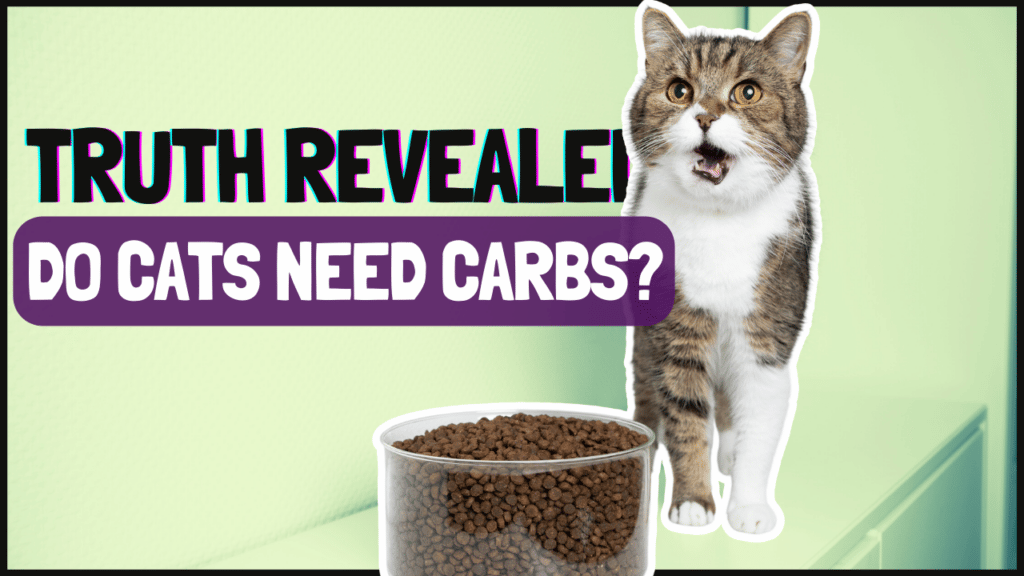
Cats have no dietary need for carbs.
But do cats need carbs for anything else?
As carnivores, cats evolved on a high protein prey diet. That includes meat, organs, and bones.
Cat owners will find a conflicting information on this topic. It’s hard to know what to do with the confusion.
In this article, you’ll find out whether cats need carbs for any reason. I’ll address arguments for and against the use of carbs in a cats diet.
Finally, I’ll touch on frequently asked questions on the topic.
So what gives anyway? Why can’t desert animals eat desserts?
Let’s find out…
Cat Nutrition 101: A Beginners Guide
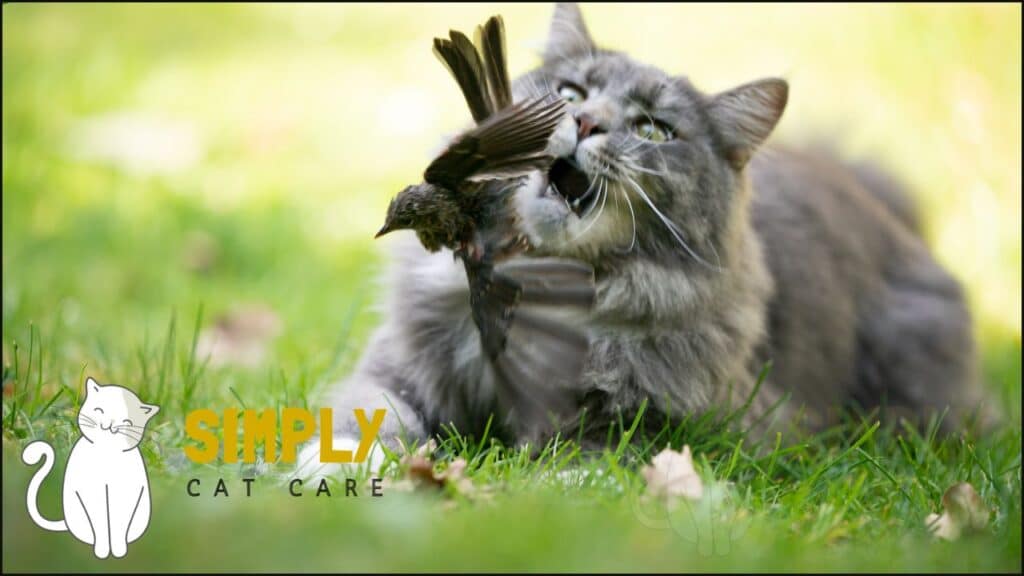
Cats eat meats, not sweets.
As carnivores, cats eat a diet high in protein and low in carbs. A cats prey includes rodents, birds, and insects.
A typical wild cat would consume the following ratio of nutrients:
- 1-2% carbs
- 30-68% fat
- 30-68% protein
Carbs come in many forms including starches and simple sugars. All carbs are broken down into simple sugars including glucose, fructose, and galactose.
Sources of carbs include:
- Potato
- Sweet potato
- Tapioca
- Chickpea
- Kidney beans
- Lentils
- Rice
- Wheat
- Corn
- Oats
- Barley
- Sugar
- Fruits
- Vegetables
Cats have glucose dependent tissues and organs. This includes:
- Brain
- Spinal cord
- Red blood cells
- Testes
- Uterus when pregnant
- Kidneys
It seems logical that carbs are needed to fuel these body parts.
However, cats get most of their sugar glucose from gluconeogenesis. Gluconeogenesis takes protein and turns it into glucose.
Unlike humans (who are omnivores), cats don’t go into ketosis on a low carb diet.
Cats cannot get many nutrients from plant based foods. This includes:
- Beta carotene (can’t convert to vitamin A)
- Linoleic acid (can’t convert to arachidonic acid)
Plant based foods are lower in essential amino acids, including taurine.
If a cat eats the whole body of prey including bones, organs, and muscle meat they get all the nutrients they need.
So why bother giving cats carbs?
Carbs are a convenient and cheap food source.
If cats can tolerate carbs, then it saves money for manufacturer and consumer alike. It’s more economical right?
There’s a few things to consider with this argument.
- Do cats like carbs?
- Are there health consequences of a high carb diet?
Let’s discuss.
Do Cats Need Carbs? Clearing The Confusion
I’ll start by addressing the preference argument.
Do cats like carbs?
Recently, a review paper from the Journal of the American Veterinary Medical Association (JAVMA) came out to suggest that yes cats do.
Let’s review it.
Do Cats Like Carbs?
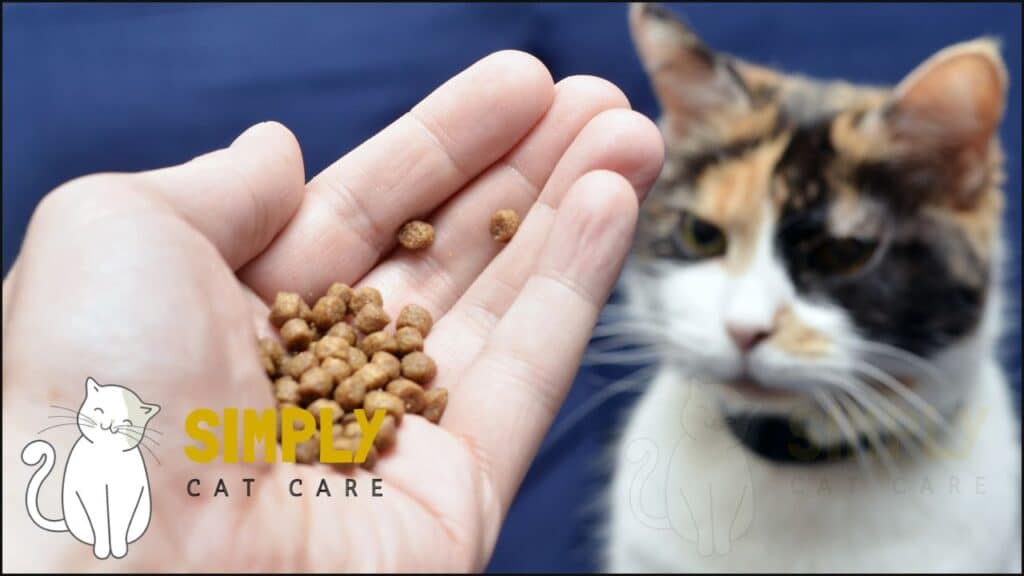
The review paper links to a recent trial on dietary preference in cats and dogs.
Their conclusion is that cats love carbs more than protein.
Here is how it’s reported:
In this latter study, the diets contained more carbohydrates (33% to 52% ME) than the options from the prior study, and varied in protein (23% to 42% ME) and fat (23% to 44% ME), but were balanced to be similar in palatability. Cats in that study chose to consume 43%, 30% and 27% of calories from carbohydrate, protein and fat, respectively.
Source – https://avmajournals.avma.org/view/journals/javma/260/5/javma.21.06.0291.xml
This would seem to suggest that cats prefer carbohydrate when given a choice.
Let’s take a closer look at the study in question.
Here’s what they did:
- Recruited 27 cats (age 4 years average)
- Placed in 2 rooms
- Offered 4 plates of dry cat food
- Able to eat food up to maintenance dietary needs
The study lasted 28 days, but started with a 2 day palatability test.
Let’s look at what was in the four plates of food:
| Table 1: Study food types | Protein* | Fat | Carb |
|---|---|---|---|
| High protein food | 42.2% | 24.5% | 33.3% |
| High fat food | 22.6% | 43.5% | 33.9% |
| High carbohydrate food | 24.6% | 23.4% | 52.0% |
| Balanced food | 29.1% | 30.1% | 40.8% |
You’ll notice a few things about this.
First, all plates are high in carb.
There’s no low carbohydrate comparison at all (all exceed 33%). This is far higher than a wild diet of 1-2% carb.
Only one plate offers a higher protein to carb ratio (the high protein plate).
The high fat and high carbohydrate plates don’t even meet AAFCO’s recommendation for maintenance protein.
However after the 28 days the researchers did indeed find that cats opted for more carbs than protein.
Case closed right?
Wrong.
A closer look reveals manipulation to get a desired outcome.
The study used a 2 day palatability trial period. In this period, cats preferred the high protein plate of dry food.
That’s when the researchers stepped in.
They tanked the flavor of the high protein plate and boosted the palatability of the other high carb plates.
Read below:
Because cats initially preferred high-protein food, this food was defined as A, and a consumption ratio was subsequently calculated to individually compare consumption of food A to consumption of each of the other foods (defined as B) such that the ratio of A/(A+B) was 0.72 for B=high-fat food, 0.60 for B=high-carbohydrate food, and 0.67 for B=balanced food. A t-test was significant at P<0.05 for B=high-fat food, high-carbohydrate food and balanced food. Ingredient changes were used to offset basic changes in palatability of macronutrients (Table 1). Because cats like chicken more than pea protein, pea protein (9.0%) and wheat gluten (35%) were used as protein sources instead of as much chicken (13.1%) in the high-protein food.
Source – https://journals.biologists.com/jeb/article/221/14/jeb173450/230/When-fed-foods-with-similar-palatability-healthy
Chicken was a key ingredient in the high protein food.
After the 2 day palatability trial, the researchers swapped out some chicken for wheat gluten (they kept the chicken high in the high carb plates to keep those tasty).
Wheat gluten is a low quality protein source. It makes sense that this would decrease taste.
To add, the researchers boosted up the other foods:
Although palatability enhancers may include digests (animal tissues enzymatically altered by proteolytic enzymes), salt, fat, L-lysine, L-cysteine, monosodium glutamate, sugar, yeasts, whey, cheese powder, meat slurries and hydrolyzed vegetable protein, in this study, the amount of palatability enhancer or ingredient changes were the primary means used to make palatability similar among foods.
The major findings in the macronutrient preference study reported here show that, given the opportunity to choose among foods with similar palatability over a 28 day period, healthy adult cats on average chose to consume most of their calories from carbohydrate (43%) and protein (30%),
Source – https://journals.biologists.com/jeb/article/221/14/jeb173450/230/When-fed-foods-with-similar-palatability-healthy
The cats didn’t have a choice.
Here’s what happened:
- 2 day palatability period. Cat’s prefer high protein plate of food.
- Researchers decrease taste of high protein plate by taking out most of the chicken and adding wheat gluten.
- Researchers boost the taste of the high carb foods by adding palatability enhancers.
The grand conclusion is that cats choose carbs over protein. It’s a long bow to draw given the methods used here.
Hill’s Pet Nutrition funded this research, a large pet food company.
Here’s a picture of what happened in the study:
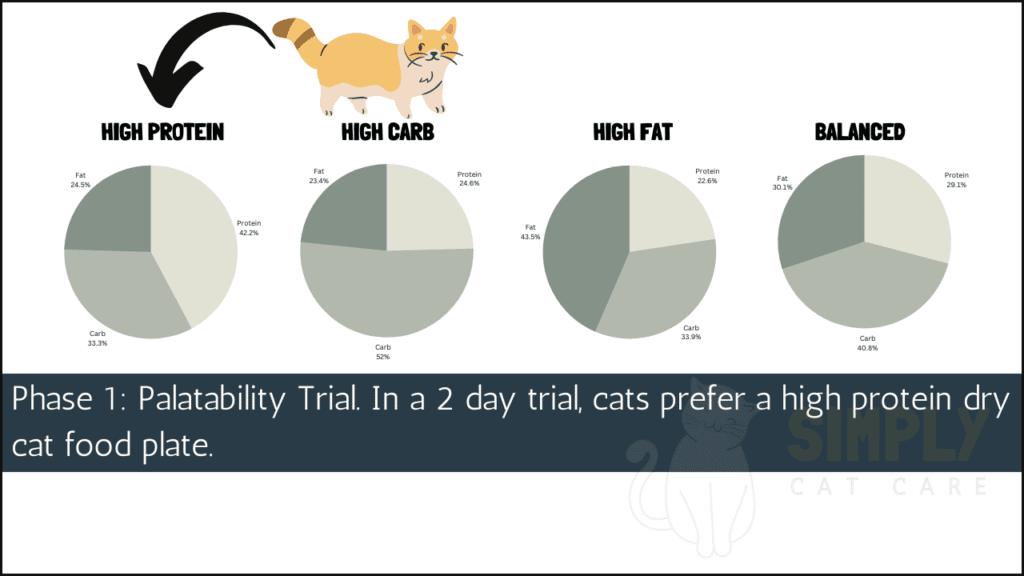
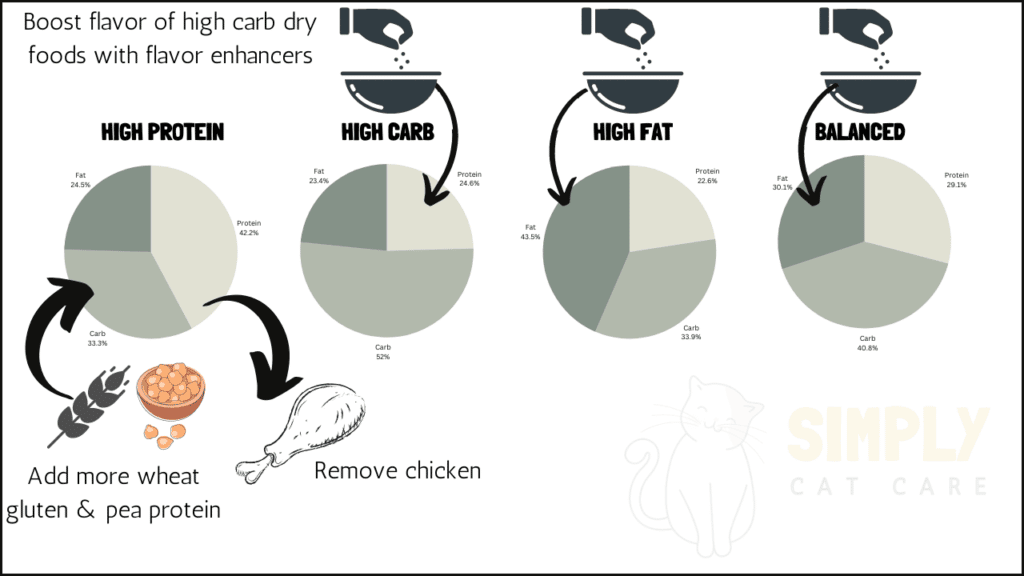
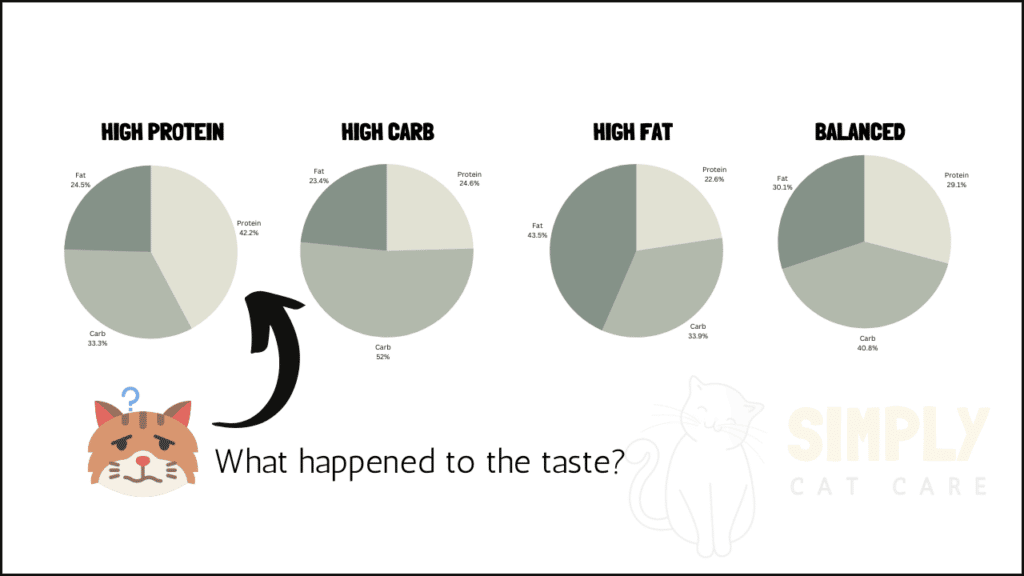
In the JAVMA review paper, the authors use the above study to refute the findings of a previous trial.
This is the 2013 study in question, published in the Journal of Comparative Physiology.
Here’s the breakdown of research design:
- 18 adult cats female and male
- Cats offered wet and dry food to check for dietary preference
- Phase 1 Naïve Self Selection: All 8 plates offered. Rotated daily to prevent position bias.
- Phase 2 Pair Wise Self-Selection: 8 x 3 day periods. Different combos of wet and dry.
- Phase 3 Experienced Self Selection: All 8 plates offered like phase 1, except with experience from phase 2 feeding trials.
Here’s a look at the foods used:
| Table 2: Study food types | Protein* | Fat | Carb |
|---|---|---|---|
| Wet food | 53% | 43% | 4% |
| Wet food A | 41% | 30% | 29% |
| Wet food B | 66% | 32% | 2% |
| Wet food C | 40% | 56% | 4% |
| Dry food | 40% | 30% | 30% |
| Dry food A | 25% | 23% | 52% |
| Dry food B | 52% | 24% | 24% |
| Dry food C | 22% | 53% | 25% |
Whilst there’s fewer cats in this trial, they do have:
- More foods
- More tests
- More variance in macronutrient selection
- No enhancement of any food at any point
Foods were provided by Mars Petcare.
When given a choice, most cats opted for wet food 85% of the time through all the trials combined.
The dietary carbohydrate opted for amounted to 13-20g or 12% on a dry matter basis.
Keep in mind, the other study funded by Hill’s didn’t even have a plate offering as low as 12% carbs.
Unless a study with a homogenous design refutes these findings, I find it hard to suggest cats have a preference for high carb diets.
At this point, the research suggests low carb is the preference with ~12% being the sweet spot.
Learn More:
Are There Health Consequences of a High Carb Diet for Cats?
Even if cats don’t prefer carbs, you could argue for boosting flavor.
And beside, so what?
You add a little extra carbs. Is that the end of the world?
Let’s look at the short and long term effects of a high carb diet for cats.
Short Term Effect of High Carb Diets in Cats
Cats can digest up to 94% of well cooked starch. Fine grinded seems to improve digestion.
So this means pile on the rice and pasta!
Not so fast…
It’s the amount of carbohydrate that is problematic.
Cat’s have a limited supply of digestive enzymes.
Compared to other animals, cats have:
- Less salivary amylase
- Less intestinal amylase
- Less disaccharidases (i.e., maltase, isomaltose, and sucrase)
- Less lactase (doesn’t increase with exposure)
- Short digestive tract
A diet of 15% carbohydrate (dry matter) is well tolerated by cats if consisting of cooked starch. On the other hand increasing the amount to 25% can result in diarrhea.
The simple sugar galactose (part of digested lactose) appears toxic to cats. In one study, a cat fed a high galactose meal developed cataracts.
Any sugar causes glycosuria (sugar being peed out) in cats. This is rare in humans.
Most cat food uses starch, but some brands do include dried fruit and sugar.
What about blood sugar?
High carb dry cat foods don’t affect blood glucose at least short term in healthy cats.
On the other hand, diabetic cats have a harder time with blood glucose clearance. A lower carb diet (less than 15% dry matter) helps with blood sugar control in diabetics.
What about carbs being protein sparing?
Research shows that protein oxidation does fall with lower protein intake in cats. A low protein diet (less than 14%) seems to result in negative nitrogen balance.
The study did supplement the protein diets with essential amino acids which could have altered the results.
AAFCO recommend 26% protein for maintenance and 30% for growth. This accounts for protein quality variance and provides a safe buffer.
That said, senior cats have a harder time digesting protein and can get sarcopenia (age related muscle loss). Cat experts suggest bumping up protein to 40% (dry matter) to help keep old cats sturdy.
What about food intolerance?
Some cats are intolerant to carb based ingredients (not carbs per se, but ingredients).
This includes:
- Wheat
- Barley
- Oats
- Corn
On the other hand, protein ingredients can also cause food sensitivities as well as gums and preservatives.
This is why cats with idiopathic digestive issues benefit from a full elimination diet that includes novel protein.
Just cutting carbs isn’t going to cut it.
So where are we at here?
There’s no reason to jump for joy and start piling on carbs in your cats diet. In the short term, your cat isn’t going to instantly die with added carbs in their diet.
How much carbs you cat can tolerate depends on age, weight, and food palatability.
Long Term Effects of High Carb Diets in Cats
An argument for high carb diets as a good choice is carbs are less calorie dense than fat. This should help address obesity in cats, it’s thought.
Carbs are 4 kcal/g compared to 9 kcal/g for fat.
It seems logical that cutting fat for carbs will help lean up cats.
Not so fast.
The problem is most high carb cat foods are dry cat foods.
Dry kibble is 4 x calorie dense than wet food due to less water content. Feeding a wet food diet is protective against obesity, with a ~60% relative risk compared to dry foods.
Obesity has increased in cats over the last 50 years.
Over 30% of cats are obese today. Most owners (92%) feed their cats dry food with only 10% feeding an all wet cat food diet.
Another problem is convenience.
Dry cat food is set and forget. Fill up a bowl and walk off.
80% of obese cats in a 1998 study had free access to dry cat food.
A more recent study also reported similar findings with 79% obese cats fed dry as the only food source.
Wet food is harder to over portion since it’s sold in 3 ounce tins or pouches. Most people know to serve 1 tin per meal, which helps to control calorie intake.
It’s an excess of calories that causes weight gain, rather than macronutrient ratio.
But there’s also problems with obesity including:
- Underreporting (i.e. not recognizing obesity with a BCS)
- Restricting exercise
- Table scrap feeding
- Mistaking premium food as being able to feed more
- Age (cats aged 8-10 are most at risk of weight gain)
- Lack of education
- Lack of vet follow up
- Food stealing (e.g. multiple cat house)
- Neutering
Obesity increases the risk of diabetes by over 400%.
Remember that diabetes impairs glucose tolerance in cats. Switching a diabetic cat to low carb food helps with blood glucose control.
The highest remission rates in cat diabetes appear with <6% carb (dry matter) diets.
Learn More:
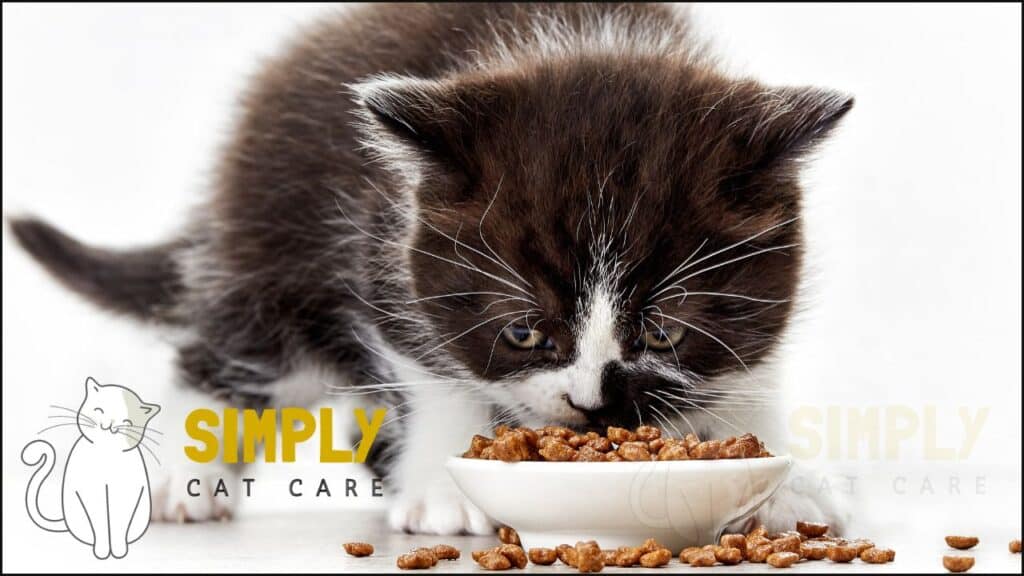
Frequently Asked Questions
Can Cats Live Without Carbs?
Yes. Cats don’t need carbohydrate in the diet. It is not an essential nutrient and is not recognized by AAFCO.
Cat’s acquire all their dietary needs from a range of animal based foods.
How Much Carbohydrate Does a Cat Need?
None.
Cats do not need carbohydrate in the diet at all.
Well designed research shows cats will opt for a diet with around ~12% carbohydrate on a dry matter basis.
Why Are Carbohydrates Important for Cats?
Carbohydrate are not important for cats.
A cat can get all their dietary needs met with protein, fat, and essential micronutrients.
What Carbohydrates Can I Feed My Cat?
You don’t need to feed your cat any carbohydrates as cat’s don’t need them.
Cat’s can tolerate small amounts of cooked starch foods that are well grinded. This includes:
- Rice
- Potato
- Wheat
- Oats
Is Rice Good for Cats?
No.
Rice offers no benefit to cats and isn’t needed in a cats diet.
Rice is high in carbohydrate and low in protein. Cooked rice doesn’t offer any micronutrients cats need for health.
Learn More:
Why Would a Cat Need Grain Free Food?
Up to 10% of cats have food intolerances. This can cause diarrhea and other digestive issues to a range of foods including grains.
Removing grains can help some cats with food intolerances enjoy improved digestion.
Keep in mind that grain free doesn’t mean ‘carb free’.
Research finds that grain free cat food has about as much carbs as grain food. These foods use the following ingredients in place of grains:
- Lentils
- Peas
- Chickpea
- Kidney beans
- Potato
- Sweet potato
- Tapioca starch
Stay vigilant.
Is Dry Cat Food High in Carbs?
Yes.
Most dry cat food is higher in carbohydrate compared to wet cat food.
Can Cats Live on Dry Food Only?
Yes, if the dry food meets the needs for life stage per AAFCO dietary guidelines for cats.
I recommend making sure to avoid free-feeding. This helps keep the calorie intake under control in cats.
Also consider opting for a low carb dry cat food and added moisture.
Conclusion
Cats don’t need carbohydrate in the diet as it isn’t an essential nutrient. AAFCO do not recognize carbohydrate as having any role in a cats diet.
When given a choice, cats prefer lower carb diets although food palatability can affect macro intake. Most cats can tolerate cooked starch in the short term, but diabetic cats require a low carb diet (less than 15%).
What is most problematic is free feeding of dry cat food. Switching to wet food helps control calorie intake
